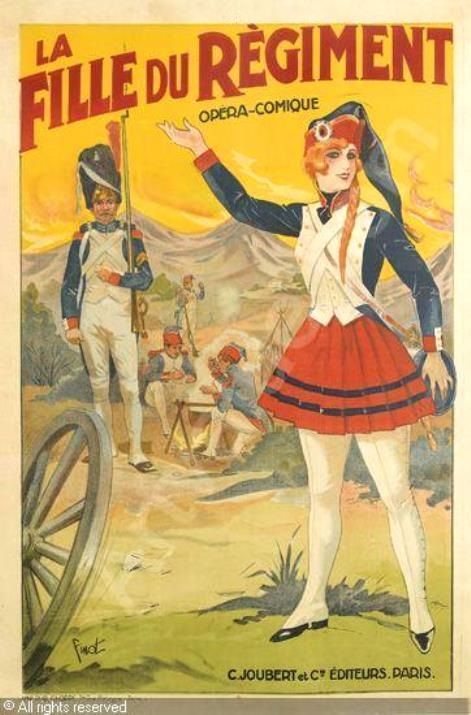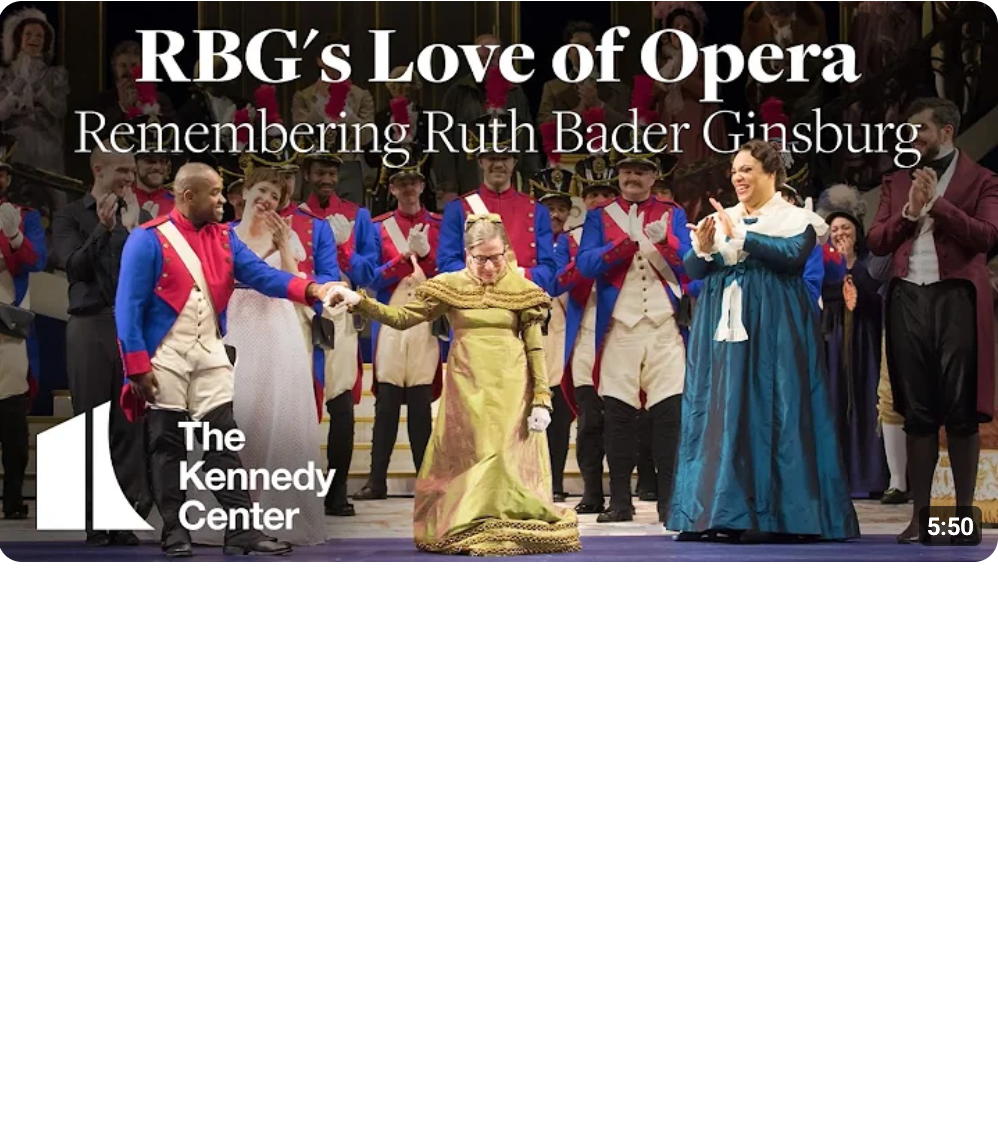Daughter of the Regiment
"La fille du régiment" was the 1st opera set by Gaetano Donizetti to a french text, premiering in Paris in 1840. The opera club previously enjoyed Donizetti's 1832 opera, L'Elisir d'amore in April of 2024. The libretto was written by Jules-Henri Vernoy de Saint-Georges and Jean-Francois Alfred Bayard.
This work is opera-comique, a definition which doesn't necessarily mean that it is comedic, merely that it is not tragic. There is no tragedy here and it is in fact, quite comedic. The story tells the story of Marie, the canteen girl and adopted "daughter" of the 21st regiment of the French army. She was found as a young girl in a battlefield after battle as the regiment was checking the battle ground for survivors and useful armaments. She proved very helpful in her role as canteen girl, which meant she helped with the care and maintenance of the camp. In the course of the opera we see her ironing great mountains of linens.
The current battle is in the Tyrols as part of the Napoleonic wars of the early 1800's. The Marquise of Birkenfield is traveling in the area and pauses in a local town, dismayed at the tumult of the surrounding fighting. The Regimental Sargeant enters the scene to give assurance that the French army will restore order shortly. Marie, also enters the scene and the sargeant asks her about the young man seen keeping her company. It is none other than Tonio, who is at that moment dragged in by soldiers who have found him skulking about. The soldiers want to execute Tonio, but Marie saves him by telling the soldiers of Tonio's bravery in saving her life when she was mountain climbing. Redeemed, Tonio, receives Marie's advice to win the favor of her "fathers". Tonio pledges allegience to France and joins the regiment in the famous aria, "Ah! mes mis". This aria is considered the Mount Everest of arias for the operatic tenor because of its nine high-Cs (C5) in a one-minute period. In 1972 at the Met Luciano Pavarotti cemented his international stardom in his turn as Tonio alongside Joan Sutherland.
Back to the story ... The Marquise requests an escort through the battle area and is accompanied back to her castle in Birkenfield. The Sargeant recalls the note found with Marie years ago and the Marquise recognizes Marie as her long-lost niece. Marie returns to Birkenfield with the Marquise. Tonio is not happy.
At Birkenfield the Marquise grooms Marie to be a great lady and plans to marry her off to her nephew, the Duke of Crankenthorp. The regiment arrives and Tonio is now an officer. Tonio has also learned a secret that he cannot yet share.
(Side note: This opera is known for having several supernumerary roles -- non-singing -- that are frequently played by local celebrities and politicians. One notable instance in the US is that Supreme Court Justice RBG once played the Duchess of Crankenthorp at a production in DC. RBG was a huge opera fan.)
Tonio asks for Marie's hand in marriage. The Marquise is offended, but relents when Tonio reveals that he knows that Marie is actually the Marquise's illegitimate daughter.
It all unwinds at the wedding to the Duke. Marie reveals to the wedding guests that she was the regimental canteen girl. She sings of her devotion to the regiment, the Marquise admits to being Marie's mother, the Marquise accepts Tonio as the groom, and celebration ensues.
Pavarotti singing "Ah! mes amis"
The great Luciano Pavarotti singing "Ah! mes amis ...". This recording is from 1972 at the Met. The accompanying photo implies that Marie was played by Pavarotti's life-long colleauge and friend, Mirella Freni. The accompanying notes say the Richard Bonynge held the baton. Further proof that this was the Covent Garden production brought over for Dame Joan Sutherland. It's well known that Sutherland always demanded that her husband conduct her performances.





